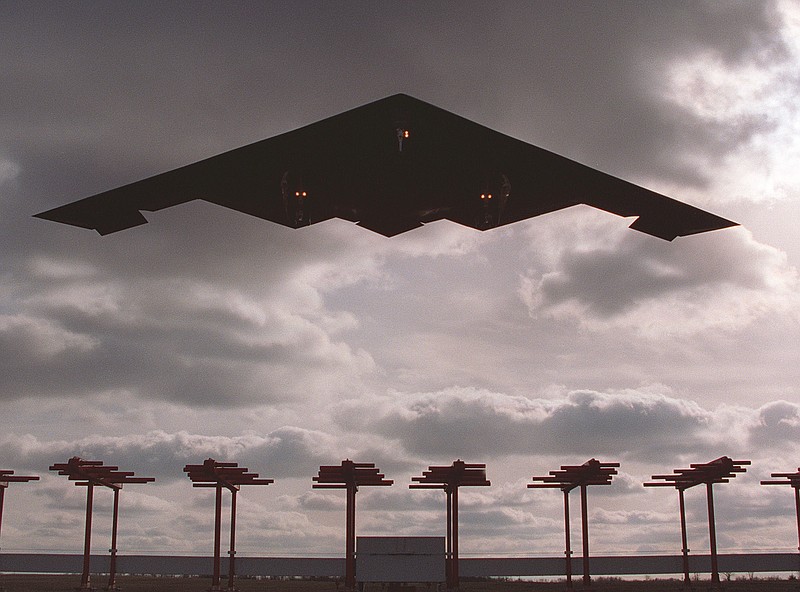KANSAS CITY, Mo. (AP) - Pentagon officials are moving forward with a 10-year, $2 billion upgrade of the nation's fleet of B-2 stealth bombers to bring their communications systems up to speed with current technologies.
The Kansas City Star reported Tuesday that improvements include replacing analog equipment with digital, upgrading antennas and enhancing communications systems and pilot displays.
The bombers are kept at Whiteman Air Force Base in central Missouri, where Col. Rob Spalding of the 509th Bomb Wing called upcoming enhancements "the biggest and most complex update of the B-2 in its history."
The first of the fleet of 21 B-2s rolled out of a Northrop Grumman Corp. hangar in the 1980s, and many of the aircraft parts have become obsolete. Maintaining the fleet is top priority at Whiteman, where scheduled overhauls happen every seven years. The Air Force plans to use the planes until 2058.
Spalding said replacement parts are getting harder to find. In some instances, technicians at the base have come up with their own solutions to keep the bomber current with changing technologies.
One example is an email and communications system that is separate from the aircraft's operational backbone. Spalding said that is a huge money-saver because any changes to the bomber's core functions require years of research and testing.
The system, called AP2, allows commanders on the ground to shoot coordinates and revised flight plans to the B-2's two-person crew. While the previous system relied on a laptop computer that swiveled on a stand between the pilot seats, the new one puts computer screens at the shoulder of each flyer.
Spalding said the system can be upgraded as more sophisticated technologies emerge.
"We designed it ourselves," he said. "Necessity is the mother of invention. We saw the need and went out and did it."
Experts say Washington's commitment to the B-2 is a no-brainer because of its lethal legacy. The bomber has been involved in every combat mission since NATO's 1999 bombing of Serbia in the Kosovo War.
"The B-2 is a door opener," said John Pike of GlobalSecurity.org, a think tank on weapons systems. "It has the unique ability to fly unescorted into hostile airspace and blow up a lot of stuff - without us having to take out the other guy's air defenses."
Northrup Grumman last month awarded a contract to BAE Systems to replace 30-year-old analogue electronics with digital support systems on all B-2s. Northrup did not disclose the size of the contract, and a spokeswoman said sensitive specifics about the planned upgrades would not be divulged.
Pike said it's not hard to imagine the ability to keep the B-2s operational for decades.
"We're talking about a low-mileage aircraft," he said, with the typical B-2 accumulating fewer than 5,000 flying hours since birth.
"The notion of the thing getting worn out due to airframe stress, you don't really need to worry about."

